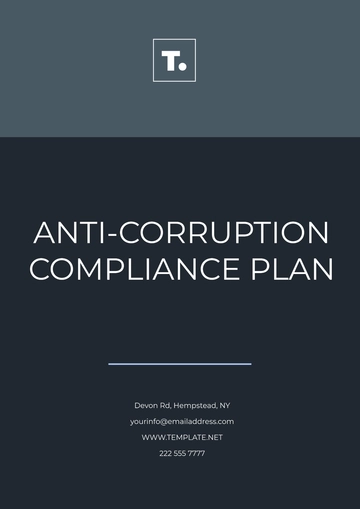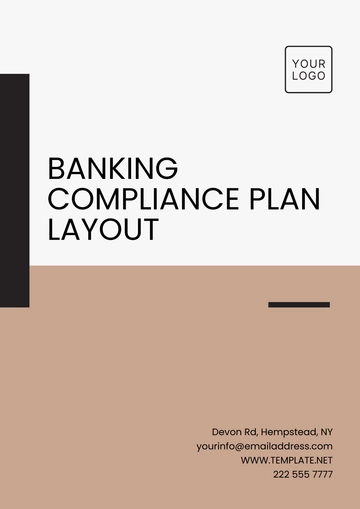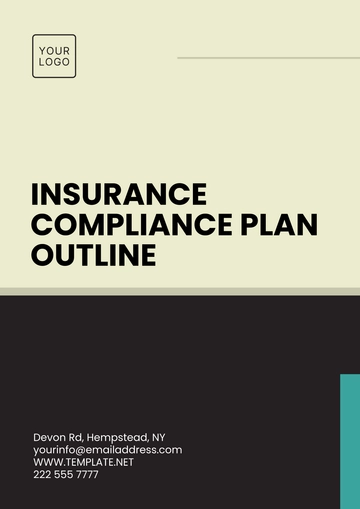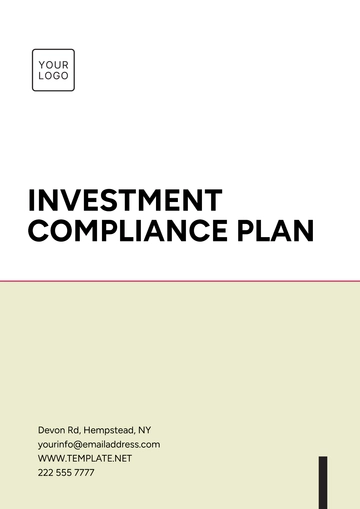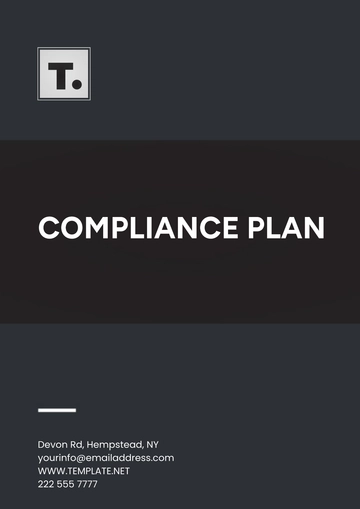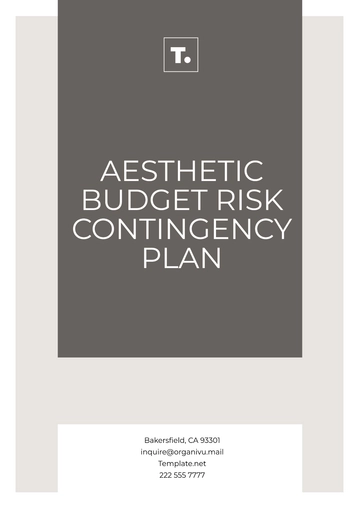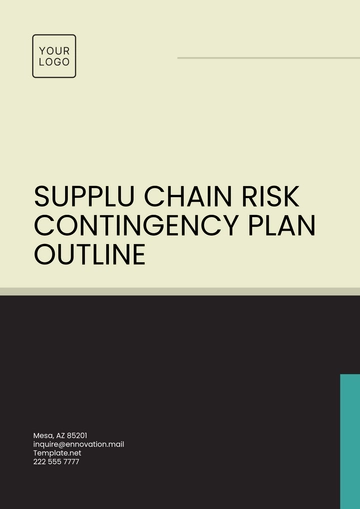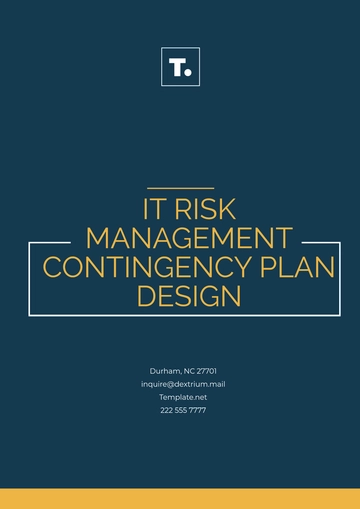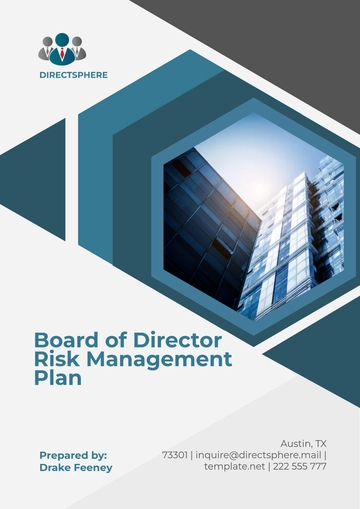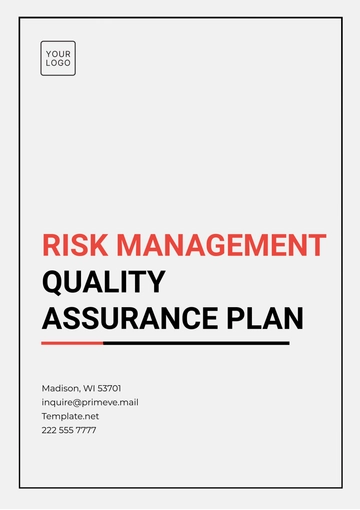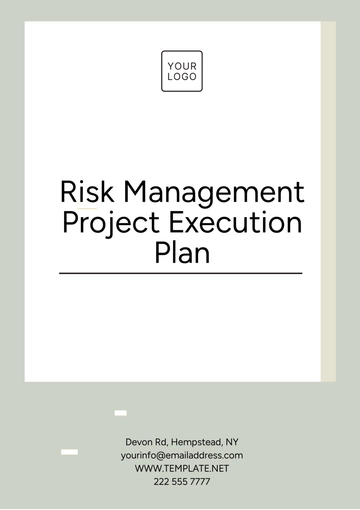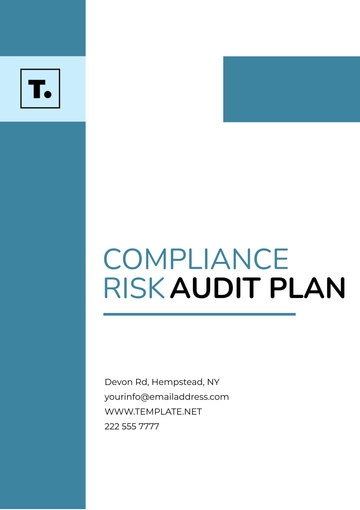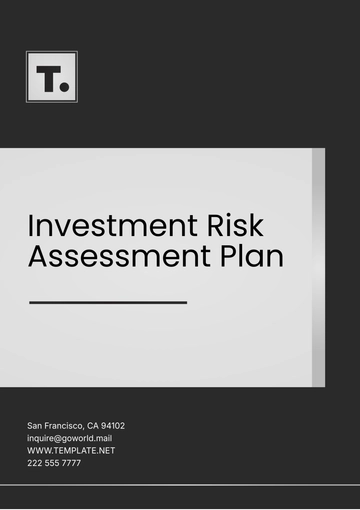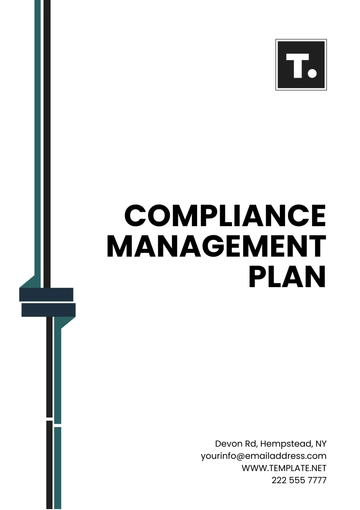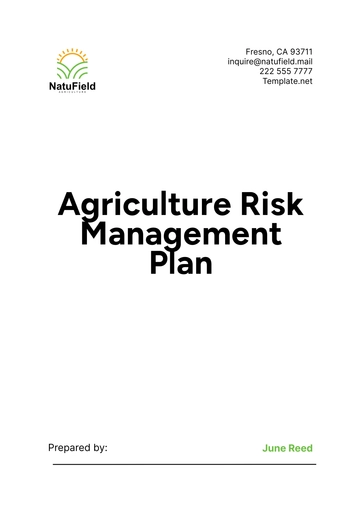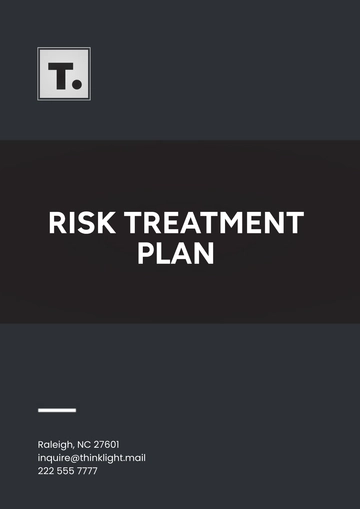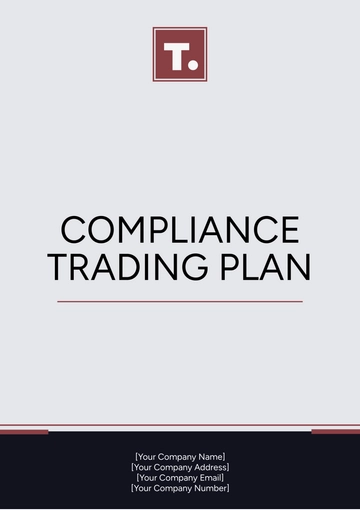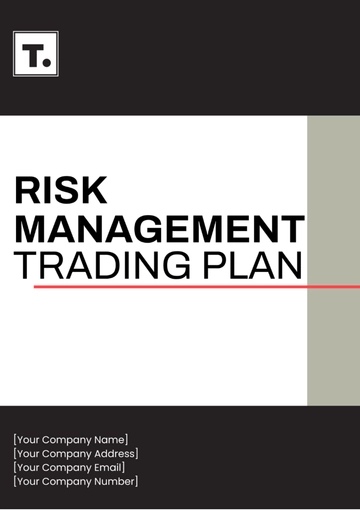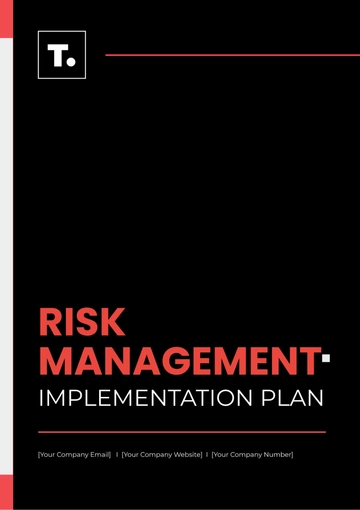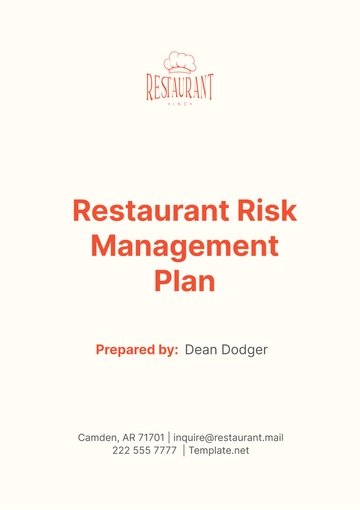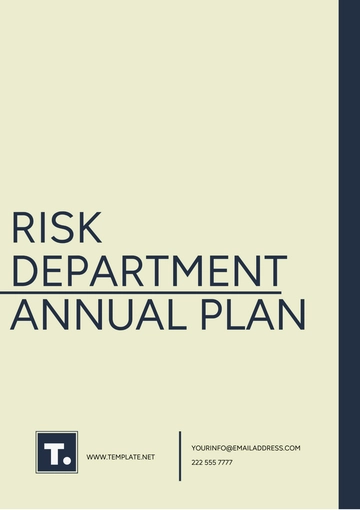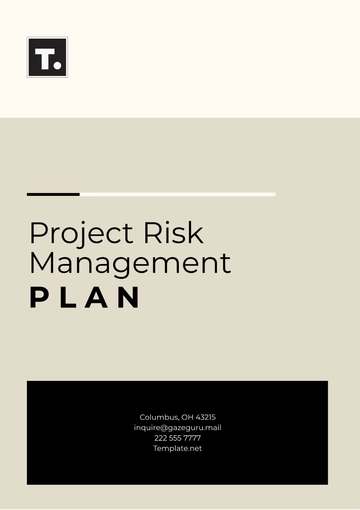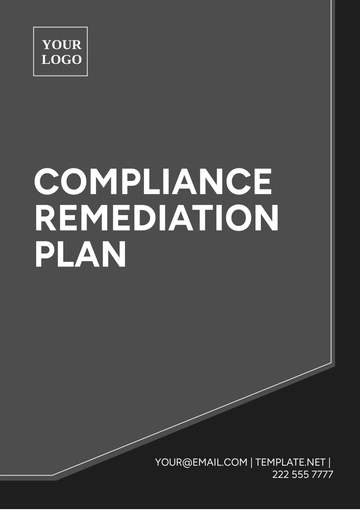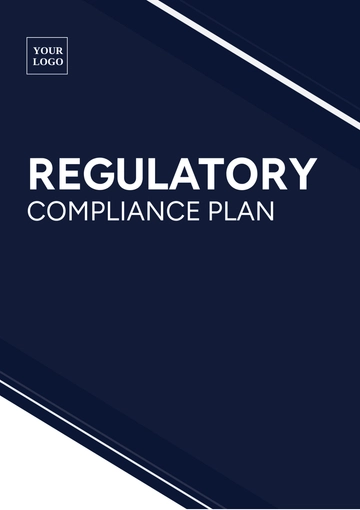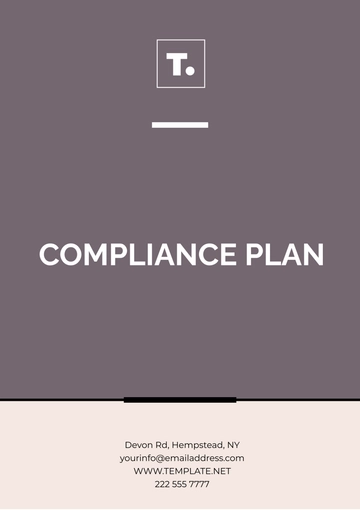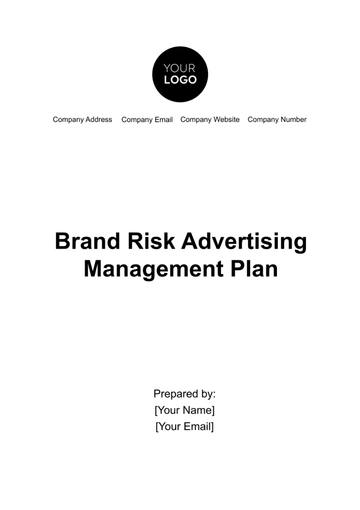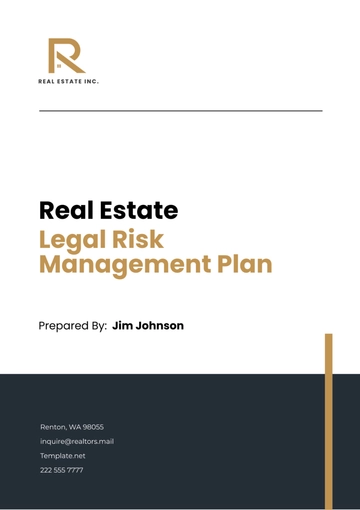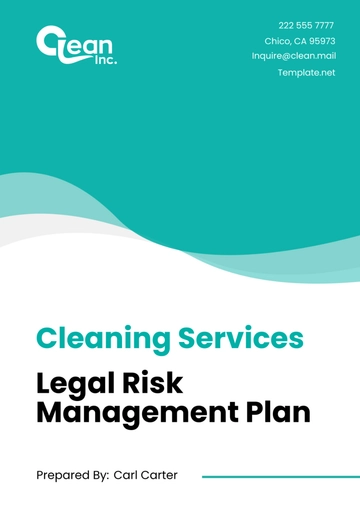Free Sample Operations Risk Management Plan
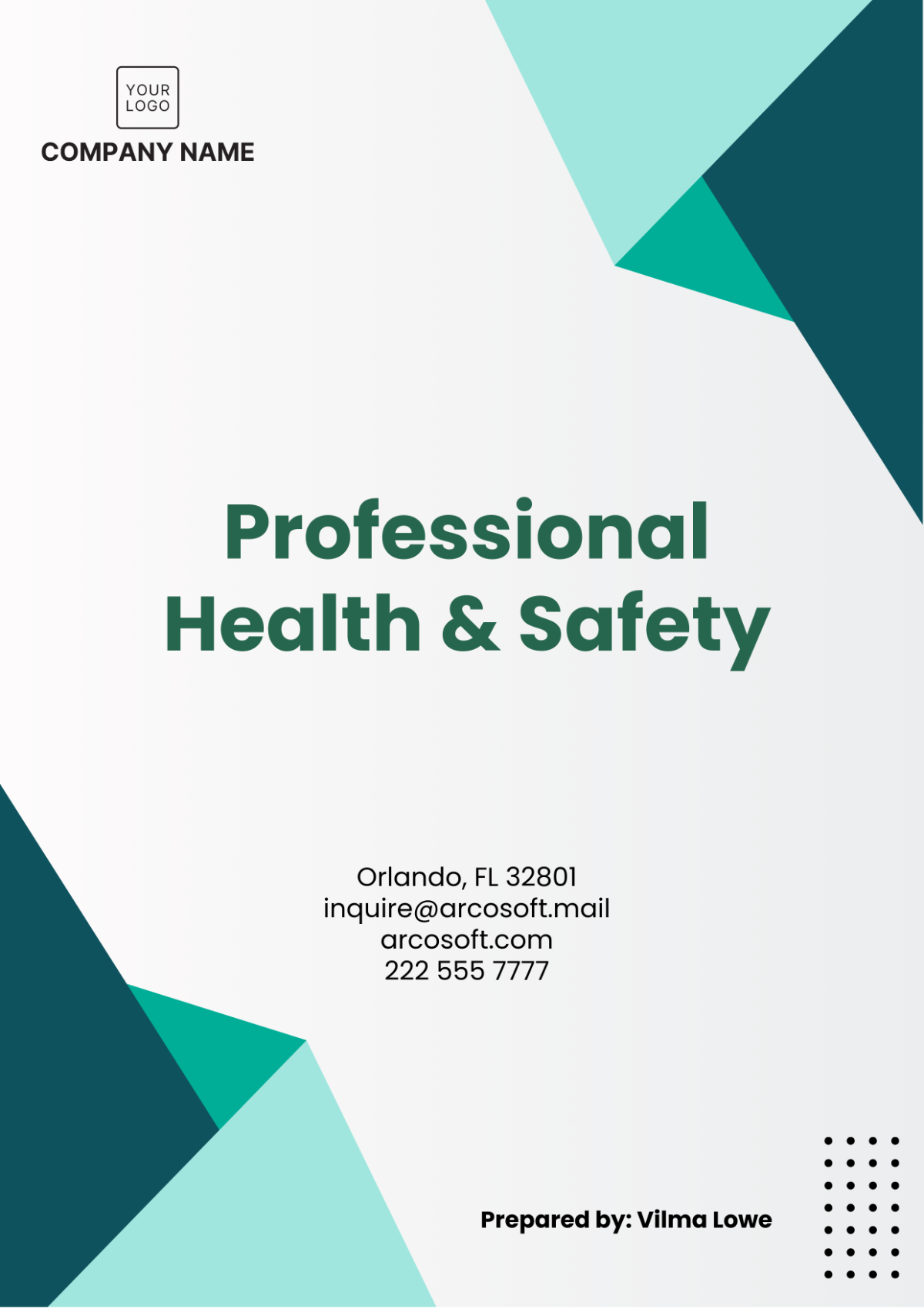
Prepared By: | [Your Name] |
Company: | [Your Company Name] |
Date: | [Date] |
Introduction
This Operations Risk Management Plan outlines the strategy for identifying, assessing, mitigating, and monitoring operational risks within the organization. The objective is to ensure that potential risks are managed effectively, minimizing their impact on daily operations and long-term success. This plan applies to all operational processes, departments, and key stakeholders involved in the organization’s activities.
Risk Management Objectives
The primary objectives of this risk management plan are:
Risk Identification: To systematically identify potential operational risks that could impact the organization’s performance.
Risk Assessment: To evaluate the likelihood and impact of identified risks on business operations.
Risk Mitigation: To develop strategies to prevent or reduce the impact of these risks.
Risk Monitoring: To continuously monitor risks and ensure timely responses as situations evolve.
Risk Identification Process
The risk identification process involves the following steps:
Risk Workshops and Brainstorming: Regular workshops with key stakeholders to identify potential risks.
Process Mapping: Analyzing each operational process to highlight vulnerabilities.
Historical Data Analysis: Reviewing past incidents or near-misses that could highlight recurring issues.
Industry Benchmarks: Looking at risks that have affected similar organizations in the same industry.
Risk Assessment
Once risks are identified, they will be assessed using a Risk Matrix to determine their potential impact and likelihood. Risks will be categorized as follows:
Risk Category | Description | Likelihood | Impact |
|---|---|---|---|
High Risk | Risks that have a high impact and high likelihood. | Very Likely | Severe |
Medium Risk | Risks with moderate likelihood and impact. | Likely | Moderate |
Low Risk | Risks that are unlikely to occur and have minimal impact. | Unlikely | Minor |
Risk Mitigation Strategies
Each identified risk will have a mitigation strategy. These strategies include preventive measures, contingency plans, and response protocols.
Example of Risk Mitigation Strategies
Operational Disruptions due to Equipment Failure:
Preventive Measure: Implement a regular maintenance schedule for all critical machinery and technology.
Contingency Plan: Maintain a list of emergency vendors for rapid equipment repair or replacement.
Response Protocol: Develop a clear process for notifying affected teams and adjusting operations accordingly.
Supply Chain Delays:
Preventive Measure: Build relationships with multiple suppliers to avoid dependency on a single source.
Contingency Plan: Maintain a safe stock of critical inventory to cushion against delays.
Response Protocol: Establish communication protocols with suppliers to ensure timely updates on potential disruptions.
Risk Monitoring and Review
Risk management is an ongoing process. Therefore, the organization will implement a continuous monitoring system to assess emerging risks and the effectiveness of mitigation strategies.
Key Performance Indicators (KPIs): Establish KPIs to measure the effectiveness of risk mitigation efforts, including downtime frequency, supply chain disruptions, and incident reports.
Regular Risk Reviews: Schedule quarterly risk reviews to assess the current risk landscape, evaluate the effectiveness of mitigation measures, and update strategies where necessary.
Risk Reporting: Provide monthly risk reports to senior management, highlighting key risks, their mitigation status, and any significant changes in the risk environment.
Roles and Responsibilities
The following individuals will be responsible for implementing and managing the risk management plan:
Risk Management Team Lead: Oversees the entire risk management process and ensures that risk strategies align with organizational goals.
Department Heads: Collaborate with the Risk Management Team to identify risks in their areas of operation and execute mitigation strategies.
Risk Monitoring Officer: Continuously monitors risks and evaluates the success of mitigation efforts.
Conclusion
The Operations Risk Management Plan ensures that the organization is prepared to manage operational risks in a structured and systematic manner. By identifying, assessing, and mitigating risks, the organization aims to minimize disruptions, safeguard resources, and support continuous operational success. Regular monitoring and updates to this plan will maintain its relevance and effectiveness in managing risk in dynamic operational environments.
- 100% Customizable, free editor
- Access 1 Million+ Templates, photo’s & graphics
- Download or share as a template
- Click and replace photos, graphics, text, backgrounds
- Resize, crop, AI write & more
- Access advanced editor
Mitigate operational risks with Sample Operations Risk Management Plan Template from Template.net—an essential tool for startups to identify, assess, and mitigate potential risks. This editable and customizable template, accessible via our AI Editor Tool, empowers you to analyze risk factors, develop risk mitigation strategies, and establish protocols to monitor and respond to risks effectively.
You may also like
- Finance Plan
- Construction Plan
- Sales Plan
- Development Plan
- Career Plan
- Budget Plan
- HR Plan
- Education Plan
- Transition Plan
- Work Plan
- Training Plan
- Communication Plan
- Operation Plan
- Health And Safety Plan
- Strategy Plan
- Professional Development Plan
- Advertising Plan
- Risk Management Plan
- Restaurant Plan
- School Plan
- Nursing Home Patient Care Plan
- Nursing Care Plan
- Plan Event
- Startup Plan
- Social Media Plan
- Staffing Plan
- Annual Plan
- Content Plan
- Payment Plan
- Implementation Plan
- Hotel Plan
- Workout Plan
- Accounting Plan
- Campaign Plan
- Essay Plan
- 30 60 90 Day Plan
- Research Plan
- Recruitment Plan
- 90 Day Plan
- Quarterly Plan
- Emergency Plan
- 5 Year Plan
- Gym Plan
- Personal Plan
- IT and Software Plan
- Treatment Plan
- Real Estate Plan
- Law Firm Plan
- Healthcare Plan
- Improvement Plan
- Media Plan
- 5 Year Business Plan
- Learning Plan
- Marketing Campaign Plan
- Travel Agency Plan
- Cleaning Services Plan
- Interior Design Plan
- Performance Plan
- PR Plan
- Birth Plan
- Life Plan
- SEO Plan
- Disaster Recovery Plan
- Continuity Plan
- Launch Plan
- Legal Plan
- Behavior Plan
- Performance Improvement Plan
- Salon Plan
- Security Plan
- Security Management Plan
- Employee Development Plan
- Quality Plan
- Service Improvement Plan
- Growth Plan
- Incident Response Plan
- Basketball Plan
- Emergency Action Plan
- Product Launch Plan
- Spa Plan
- Employee Training Plan
- Data Analysis Plan
- Employee Action Plan
- Territory Plan
- Audit Plan
- Classroom Plan
- Activity Plan
- Parenting Plan
- Care Plan
- Project Execution Plan
- Exercise Plan
- Internship Plan
- Software Development Plan
- Continuous Improvement Plan
- Leave Plan
- 90 Day Sales Plan
- Advertising Agency Plan
- Employee Transition Plan
- Smart Action Plan
- Workplace Safety Plan
- Behavior Change Plan
- Contingency Plan
- Continuity of Operations Plan
- Health Plan
- Quality Control Plan
- Self Plan
- Sports Development Plan
- Change Management Plan
- Ecommerce Plan
- Personal Financial Plan
- Process Improvement Plan
- 30-60-90 Day Sales Plan
- Crisis Management Plan
- Engagement Plan
- Execution Plan
- Pandemic Plan
- Quality Assurance Plan
- Service Continuity Plan
- Agile Project Plan
- Fundraising Plan
- Job Transition Plan
- Asset Maintenance Plan
- Maintenance Plan
- Software Test Plan
- Staff Training and Development Plan
- 3 Year Plan
- Brand Activation Plan
- Release Plan
- Resource Plan
- Risk Mitigation Plan
- Teacher Plan
- 30 60 90 Day Plan for New Manager
- Food Safety Plan
- Food Truck Plan
- Hiring Plan
- Quality Management Plan
- Wellness Plan
- Behavior Intervention Plan
- Bonus Plan
- Investment Plan
- Maternity Leave Plan
- Pandemic Response Plan
- Succession Planning
- Coaching Plan
- Configuration Management Plan
- Remote Work Plan
- Self Care Plan
- Teaching Plan
- 100-Day Plan
- HACCP Plan
- Student Plan
- Sustainability Plan
- 30 60 90 Day Plan for Interview
- Access Plan
- Site Specific Safety Plan
